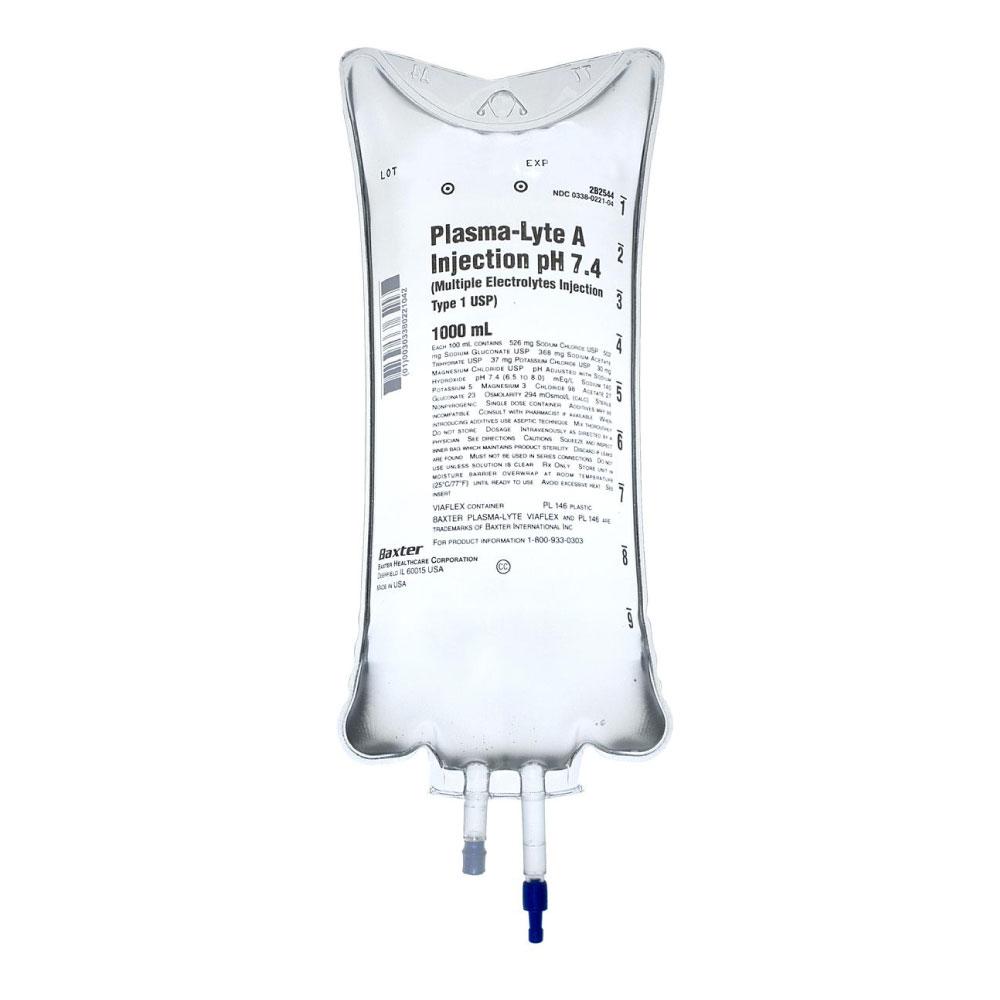Understanding Plasma-Lyte: A Comprehensive Guide
In the world of medicine and healthcare, the importance of intravenous (IV) fluids cannot be overstated. They are critical for patient hydration, electrolyte balance, and overall medical management. One such solution that has garnered attention in recent years is Plasma-Lyte. In this blog, we will explore what Plasma-Lyte is, its components, uses, and advantages in clinical practice.
What is Plasma-Lyte?
Plasma-Lyte is a balanced intravenous electrolyte solution designed to mimic the natural electrolyte composition of human plasma. It is commonly used in clinical settings for hydration and as a maintenance fluid. Unlike traditional saline solutions, Plasma-Lyte contains a mix of electrolytes that can help maintain acid-base balance in patients.
Composition of Plasma-Lyte
Plasma-Lyte is formulated to include the following key components:
– Chloride: Works in tandem with sodium to regulate osmotic pressure and maintain fluid balance.
– Magnesium: Plays a crucial role in enzymatic reactions and muscle function.
– Acetate and Gluconate: These act as buffers, helping to maintain acid-base balance in the body.
This balanced composition is one of the key features that set Plasma-Lyte apart from other IV fluids, particularly normal saline, which is often criticized for its higher chloride content that can lead to acidosis in certain patients.
Uses of Plasma-Lyte
Plasma-Lyte is versatile and can be used in various clinical situations, including:
1. Fluid Resuscitation: It is effective for restoring intravascular volume in patients who are dehydrated or in shock.
2. Maintenance Fluid: Plasma-Lyte can be used for patients who require ongoing hydration, such as those unable to take oral fluids.
3. Electrolyte Replacement: It is particularly beneficial for patients with electrolyte imbalances, offering a more balanced replacement option than normal saline.
4. Surgical Patients: Often used during and after surgeries to maintain fluid and electrolyte balance.
Advantages of Plasma-Lyte
1. Balanced Electrolyte Composition: Its formulation closely resembles that of human plasma, making it more physiologically compatible.
2. Reduced Risk of Acidosis: The acetate and gluconate in plasma-Lyte act as buffers, which can help prevent metabolic acidosis—a common complication with high-chloride solutions like normal saline.
3. Versatility: Plasma-Lyte can be used across various clinical scenarios, from emergency settings to routine postoperative care.
4. Lowered Risk of Kidney Injury: Some studies suggest that using balanced solutions like Plasma-Lyte may reduce the risk of acute kidney injury compared to saline.
Considerations and Precautions
While Plasma-Lyte offers numerous benefits, healthcare providers need to assess individual patient needs. Factors such as kidney function, existing electrolyte imbalances, and underlying medical conditions must be considered when choosing the appropriate IV fluid.
What is the Purpose of Plasma-Lyte?
Plasma-Lyte serves as an intravenous (IV) fluid that helps maintain hydration, electrolyte balance, and acid-base status in patients. Here are the key purposes:
1. Fluid Resuscitation: Plasma-Lyte is often used to restore fluid volume in patients experiencing dehydration or shock.
2. Electrolyte Replacement: It provides essential electrolytes—such as sodium, potassium, and magnesium—helping to correct imbalances that can arise from various medical conditions.
3. Maintenance Fluid: It is suitable for patients who require ongoing hydration but cannot take fluids orally, such as those post-surgery or with certain medical conditions.
4. Acid-Base Balance: The inclusion of acetate and gluconate acts as buffers, helping to maintain a stable pH and prevent metabolic acidosis, which can be a risk with high-chloride solutions like normal saline.
5. Compatibility: Plasma-Lyte is designed to closely resemble human plasma, making it more physiologically compatible and reducing potential complications associated with other IV fluids.
Overall, Plasma-Lyte plays a crucial role in various clinical scenarios, ensuring patients receive balanced hydration and electrolyte support.
What is Plasma-Lyte Used for?
Plasma-Lyte is used for a variety of medical purposes, including:
1. Fluid Resuscitation: To restore intravascular volume in patients who are dehydrated, in shock, or have experienced significant fluid loss.
2. Electrolyte Replacement: To correct electrolyte imbalances in patients, providing essential electrolytes like sodium, potassium, and magnesium.
3. Maintenance Fluid: For patients who cannot take oral fluids, such as those post-surgery or with certain medical conditions, to maintain hydration.
4. Acid-Base Balance: The buffers in Plasma-Lyte help prevent metabolic acidosis, making it a better option for some patients compared to high-chloride solutions like normal saline.
5. Surgical Patients: Commonly used during and after surgeries to ensure fluid and electrolyte balance is maintained.
6. Critical Care Settings: Utilized in intensive care units (ICUs) for patients requiring close monitoring and support.
7. Fluid Therapy in Special Populations: Used in specific cases like burn patients or those with trauma, where fluid and electrolyte management is critical.
Overall, Plasma-Lyte is a versatile fluid used in many clinical situations to support patient health and recovery.
What is Plasma-Lyte 148 Used for?
Plasma-Lyte 148 is a specific formulation of Plasma-Lyte that is used for various medical purposes. Its composition includes sodium, chloride, potassium, and other electrolytes, making it a balanced intravenous (IV) fluid. Here are the primary uses of Plasma-Lyte 148:
1. Fluid Resuscitation: It helps restore fluid volume in patients who are dehydrated, in shock, or experiencing significant blood loss.
2. Electrolyte Replacement: Plasma-Lyte 148 provides essential electrolytes, helping to correct imbalances that can occur due to various medical conditions or treatments.
3. Maintenance Fluid: It is often used for patients who are unable to take oral fluids, ensuring they receive adequate hydration.
4. Acid-Base Balance: The formulation helps maintain acid-base homeostasis, reducing the risk of metabolic acidosis compared to high-chloride solutions like normal saline.
5. Surgical Patients: Commonly used during and after surgeries to maintain fluid and electrolyte balance.
6. Critical Care: Frequently utilized in intensive care units (ICUs) for patients requiring close monitoring and support.
7. Burn and Trauma Patients: Beneficial in managing fluid and electrolyte needs for patients with burns or traumatic injuries.
Overall, Plasma-Lyte 148 is a versatile IV solution that plays an important role in fluid and electrolyte management in a variety of clinical settings.
Where to Buy Plasma-Lyte?
Are you in need of Plasma-Lyte for your medical practice or personal use? Look no further than Joya Medical Supplies! We understand the importance of having access to high-quality medical products, which is why we are proud to offer a wide range of Plasma-Lyte solutions to meet your needs. Whether you are looking for Plasma-Lyte A, Plasma-Lyte 148, or any other variation, we have you covered.
Conclusion
Plasma-Lyte is a valuable tool in modern medicine, providing a balanced, physiologically compatible option for fluid and electrolyte management. Its versatility and safety profile make it an excellent choice for a variety of clinical situations. As healthcare continues to evolve, solutions like Plasma-Lyte represent an important advancement in patient care, promoting better outcomes and overall health.
For healthcare professionals, understanding the nuances of different IV fluids is crucial for providing optimal patient care. As more evidence emerges, Plasma-Lyte is likely to play an increasingly important role in clinical practice.




